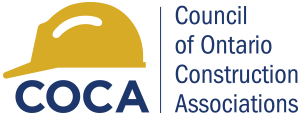The Ontario government is protecting and supporting workers by committing to create Canada’s first-ever Occupational Exposure Registry to track harmful exposure levels, help diagnose workplace diseases faster, improve worker compensation, and reduce costs to the healthcare system. The registry will help address many of the 41 recommendations resulting from the province’s first-ever review of the occupational illness landscape, released in a report today.
Many workplace illnesses currently go undiagnosed or unreported because of the delay between exposure and symptoms, making it difficult to identify occupational disease risks and for workers to get financial support when they fall ill. The new registry would include comprehensive exposure records, identify at-risk workers, help with earlier diagnoses, and potentially contribute to expanding the list of presumptive illnesses in Ontario to improve worker compensation.
In addition, Ontario is creating an Occupational Illness Leadership Table made up of industry experts and worker advocates to guide the implementation of the report’s recommendations. The table will include some of the province’s foremost medical voices along with representatives from workplace health and safety groups to ensure the province keeps pace with advancements in medical science and technology and delivers for workers.
To build the Occupational Exposure Registry, which is expected in 2025, the Ministry of Labour, Immigration, Training and Skills Development is working with the Occupational Cancer Research Centre (OCRC) to collect and analyze data from existing Ministry industrial hygiene records. The Ministry and OCRC are also working with healthcare providers and industry associations to gather new data and catalogue past and current occupational exposures across Ontario’s hundreds of thousands of workplaces.
The Occupational Disease Landscape Review report was authored by Dr. Linn Holness and Janet Brown of the MAP Centre for Urban Health Solutions at St. Michael’s Hospital in Toronto, a site of Unity Health Toronto, and an internationally recognized research organization. The 58-page report includes recommendations on workplace prevention and monitoring of occupational disease, healthcare delivery and ways to strengthen connections within the system.
In addition to the Registry, work is underway to deliver on the report’s recommendations, including the development of a web-based Silica Control Tool that will assist in detecting and monitoring workplace silica exposure in the construction and mining industries.
 T. 416.968.7200
T. 416.968.7200


